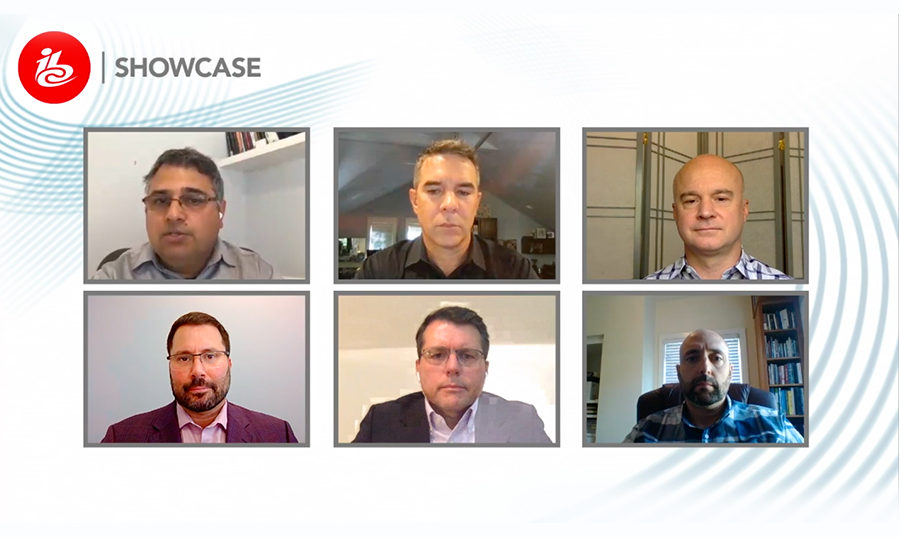Intrinsic to the broadcast and entertainment industry is the continuous need for evolution and enhancement of the consumer experience; often adapting workflows in line with technological advances. The demand for all types of media has spiked globally this year as live event producers and content creators were forced to move online and digitalize their offerings. This transition has seen cloud technology come into its own, playing a vital role in delivering content direct-to-consumers (DTC).
More than ever, audiences expect to have content accessible at their fingertips — anytime, anywhere, and on any device. Technological capabilities are opening up a range of new opportunities for broadcasters and service providers as they look to enrich content and increase the scale of its delivery.
Is cloud technology the solution for scale and flexibility?
Media and entertainment providers have a significant opportunity to adopt new technologies and effectively experiment with changes to business models and workflows. In a world where there is an expectation from consumers for dynamic content experiences, the need to move away from traditional processes has never been timelier.
Cloud-based solutions offer the flexibility to scale, minimize compute cycles, and drive cost efficiencies. Cloud technology allows service providers and broadcasters to stop estimating and effectively scale what is required — be that storage or processing. Broadcasters are now becoming increasingly able to deliver more events to more audiences in efficient formats using the cloud.
Cloud creates new hybrid vertical for Chattanooga Film Festival
At the start of the pandemic, the Chattanooga Film Festival (CFF) planned to carry on as usual, but the gravity of the situation forced organizers to change their plans rapidly. In response to the physical event’s cancellation, MediaKind collaborated with Microsoft Azure, Evergent, Slalom, and VisualOn to deliver a digital version of the CFF. Working with a developer mindset, we quickly established how best to replicate the real-world event on a virtual platform. The most important part of the project was to support the festival’s hard-hit community of independent content creators.
With just five weeks from conception to delivery, the team quickly established how best to facilitate the virtual event, comprising both on-demand and live content assets. It was essential that we replicated as much of the on-the-ground experience as possible and made the critical connections that would otherwise occur face-to-face.
The media delivery collaboration enabled the event to run on a feature-rich platform using a cloud-based solution. The cloud helped to scale and accommodate the attendees while reproducing the intimacy of attending the annual event. It was essential to ensure the filmmakers could retain the best creative control over their content while protecting the value of premium rights and future distribution deals.
The CFF organizers were thrilled with the attendance and notably, the ability to reach audiences who otherwise couldn’t have physically attended the event. The virtual CFF event gained so much positive feedback that organizers are planning to stream the event to audiences globally when the physical event resumes. The teamwork and collaboration between technology providers established a new event vertical and hybrid model for MediaKind, a service we can extend to other events.
Innovating aggregation, services, and industry momentum
Technology is transforming the entire media and entertainment supply chain. The disruption organizations and events have faced this year alone has opened up a realm of new opportunities for cloud technologies to thrive as broadcasters and content creators look for reliable and affordable solutions to engage audiences in delivering optimal content experiences.
The opportunity to replicate this virtual delivery model for the CFF and adapt it to other events, organizations, and industries, is clear. Perhaps the best use case lies with sports federations using cloud-based solutions to configure and set up the particulars of their events as required. MediaKind can help build cloud-based platforms that adapt to individual business needs — from launching niche services to pay-as-you-go resources. With expanding teams and shrinking budgets, the time to deploy cloud solutions is now.
The internet continues to expand content providers reach, with the ability to deliver premium content to anyone, anywhere and anytime. The need to unite audiences to remotely network, connect, and discover content will continue to gain momentum as will the delivery of rich content that is increasingly personalized and engaging.
The future looks bright
We can’t predict the future, but one thing that is for sure is the need for flexible business models and workflows. The demand for content will continue to exceed traditional capabilities, and as such, content providers will need to adapt to these changes and experiment with new solutions. Driving innovation with cloud-based solutions and building new workflows from the platform point of view is essential for longevity and success. Businesses need to grow with a developer mindset and experiment with technologies that make problem-solving possible.
Watch the full Microsoft webinar on optimizing content delivery with speakers from Haivision, Harmonic, Microsoft, Telestream, and Verizon Media here.



